When America Stole a Russian Mi-24 Hind Helicopter
July 1st, 2023
9 minute read
During the Cold War, the Soviet Union often kept its cards close to the chest when it came to new weapons systems — so much so that Western intelligence went to what can only be described as “extreme lengths” to attempt to gather any information about the platforms. Though the United States did acquire plenty of small arms in Vietnam and other conflicts, and even managed to eventually obtain a T-72 main battle tank (MBT) in the 1980s, another weapon platform completely eluded all efforts — until it didn’t.

That would be the Soviet-built Mil Mi-24 (NATO reporting “Hind”), a large helicopter gunship, attack helicopter, and low-capacity troop transport. First introduced in 1972, the Mi-24 proved to be a workhorse for the Soviet Army during the latter stages of the Cold War — becoming essentially a flying infantry fighting vehicle.
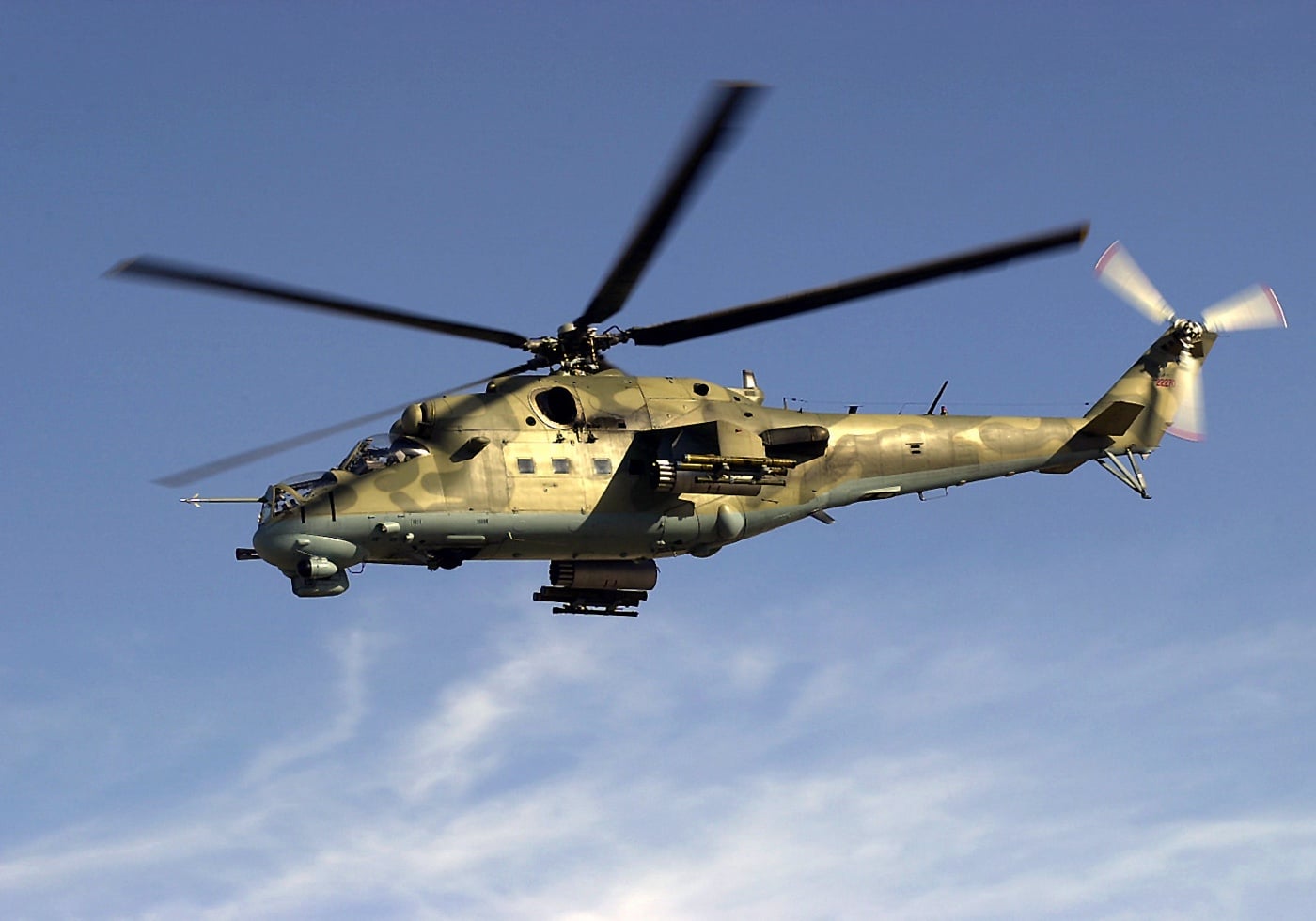
It was conceived as a rotary aircraft that could deliver troops to the frontlines, yet serve in a fire support role. And America did manage to finally get one. But more on that in a moment.
Enter the Mil Mi-24
Soviet aerospace engineer Mikhail Mil (1909-1970) first conceived of the concept of such battlefield mobility in the early 1960s, but it took until the U.S. involvement in the Vietnam War for Soviet military officials to be convinced of the advantages of an armed helicopter that could provide ground support and transport troops.
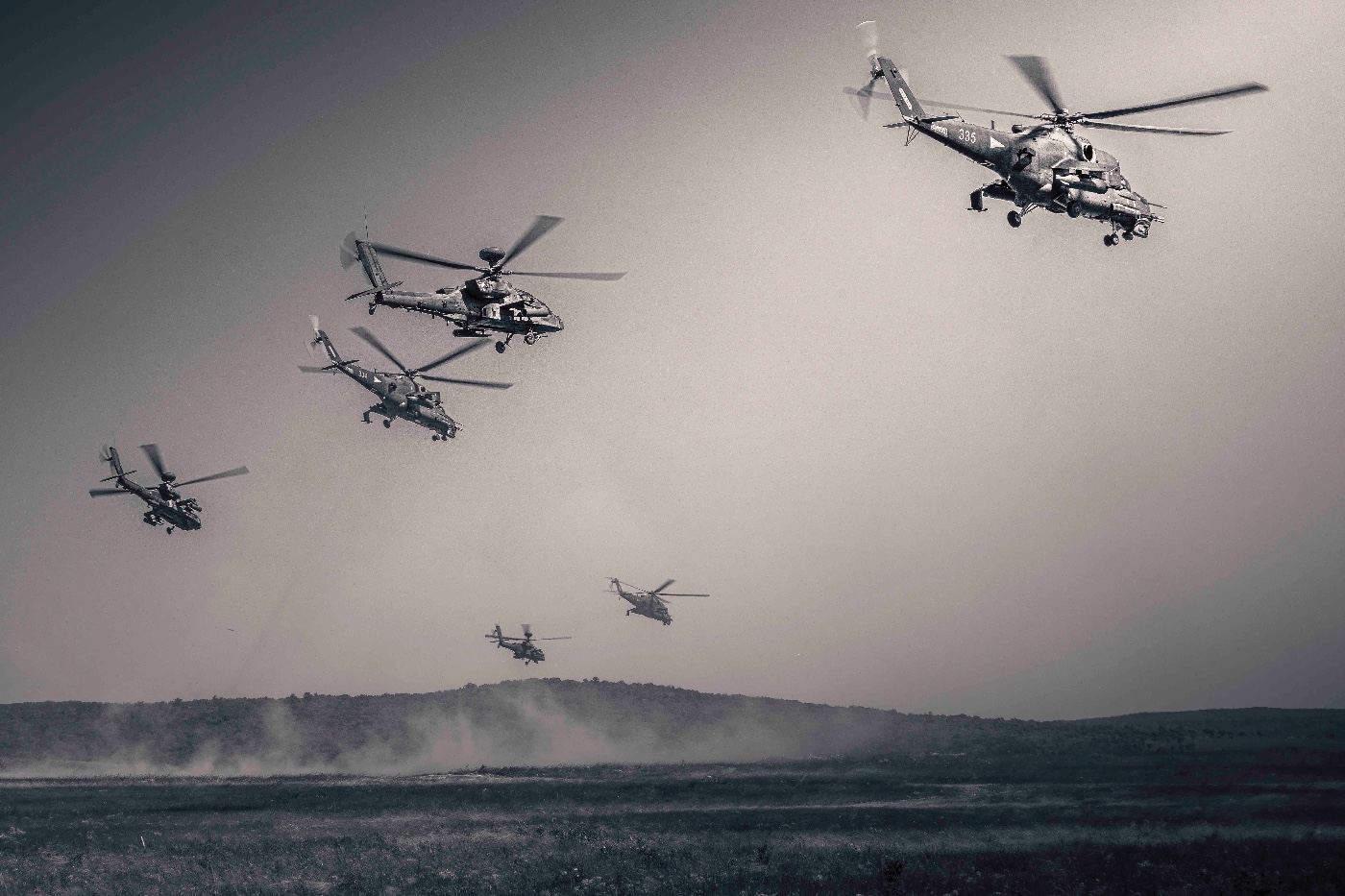
Work on what would become the Mi-24 proceeded under Mil until his death in 1970, with the core of the aircraft derived from the Mil Mi-8 (NATO reporting name “Hip”). The design featured two top-mounted turboshaft engines, which drove a mid-mounted 17.3 meter five-blade main rotor and a three-blade tail rotor. The design of the fuselage took an entirely new approach, which intended to provide a much smaller head-on target to the enemy — while the pilot and co-pilot were seated in tandem under a joined glass cockpit. This was later redesigned to the more familiar model that featured two separate, stepped cockpits, which provided improved visibility and better protection from ground-based fire.
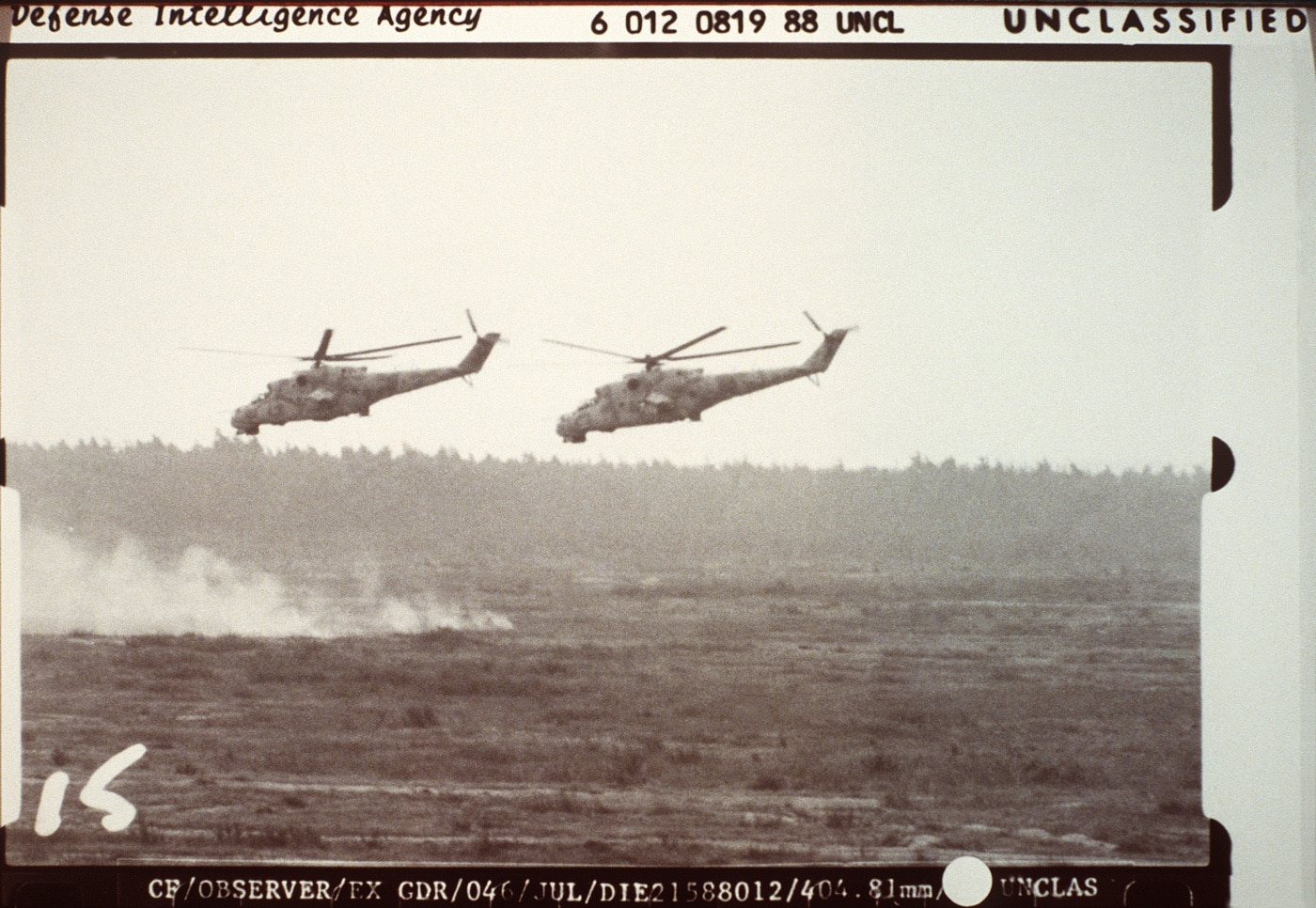
Though Mikhail Mil didn’t live to see the aircraft actually enter service, it proved quite successful in combat operations throughout the 1970s, 1980s and into the 1990s. Moreover, the Russian Aerospace Force (Air Force) had announced in 2007 that it would replace the Mi-24 fleet with newer aircraft including the Ka-52 “Alligator” (NATO reporting name “Hokum B”) and Mi-28 (NATO reporting name “Havoc”), the Hind has remained in service.
It has been significantly upgraded with new electronics, sights, arms, and even night vision goggles for pilots.
A True Flying Gunship
It is easy to see why the Hind has developed a reputation as a flying tank. It was a powerfully armed helicopter that was equipped with such weapons as the four-barreled 12.7mm Yakushev-Borzov Yak-B Gatlling-style gun, fixed twin-barrel GSh-30K autocannon, GIAT dual feed 20mm (M693) autocannon, and external stores that allowed for the carrying of a variety of conventional drop bombs, anti-tank guided missiles, rocket pods, and additional machine gun pods on stub wings.
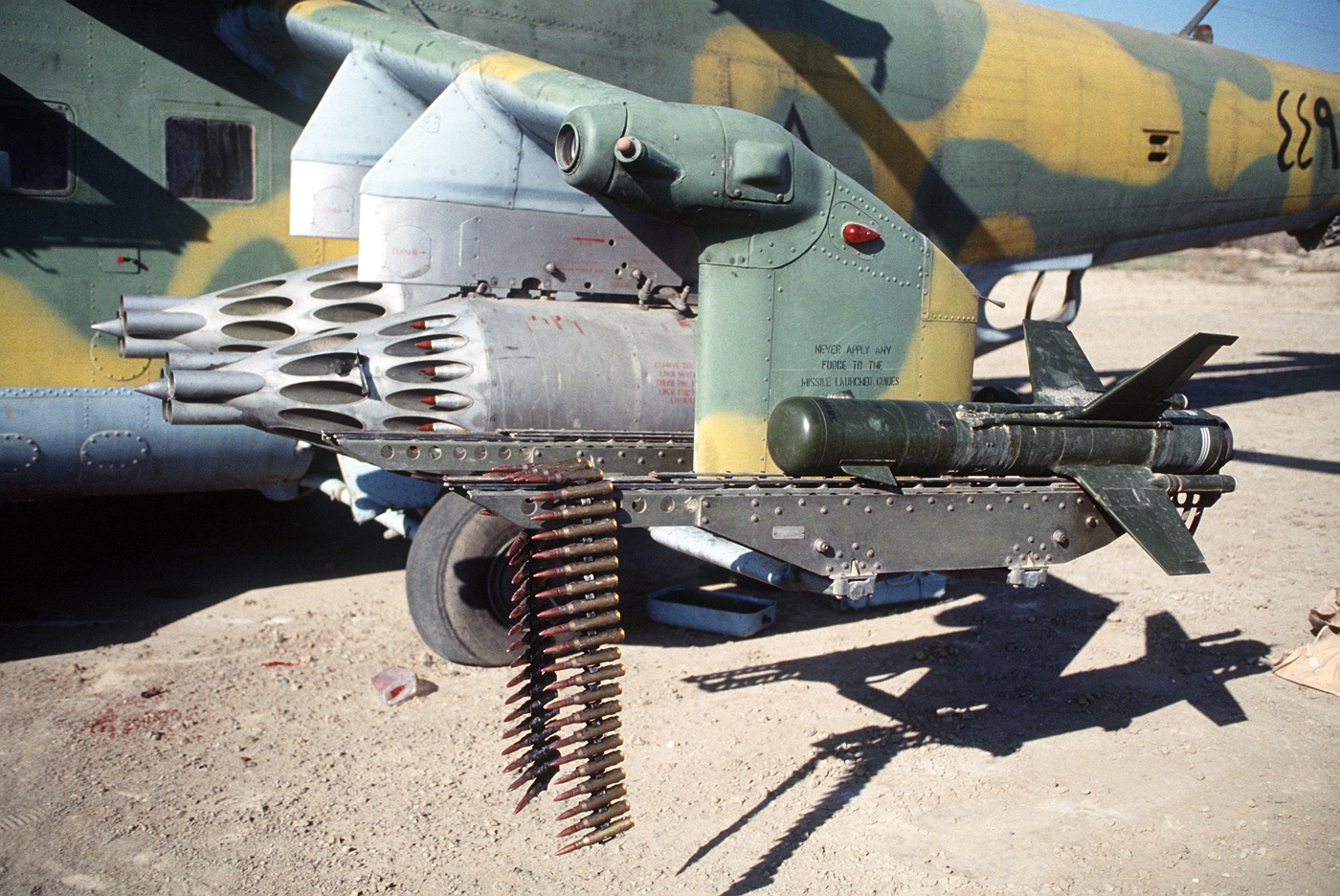
The helicopter had its baptism of fire during the Ogaden War in 1977 when it was employed by pro-Soviet Ethiopian forces against Somalia. It proved instrumental in the Ethiopian military’s campaign and was then employed a year later by the Libyan forces in the Chadian-Libyan War. It was Chad’s military that had to face the helicopter in combat, but it actually proved to be quite the opportunity for the United States — for reasons we’ll get to shortly.
The Hind vs. Man-Portable Weapons
It was during the Soviet-Afghan War that the Mi-24 truly highlighted its capabilities to provide close air support and ground assault — earning the nickname “Satan’s Chariot” — yet, was also in that conflict where it proved highly vulnerable to FIM-92 Stinger missile launchers.
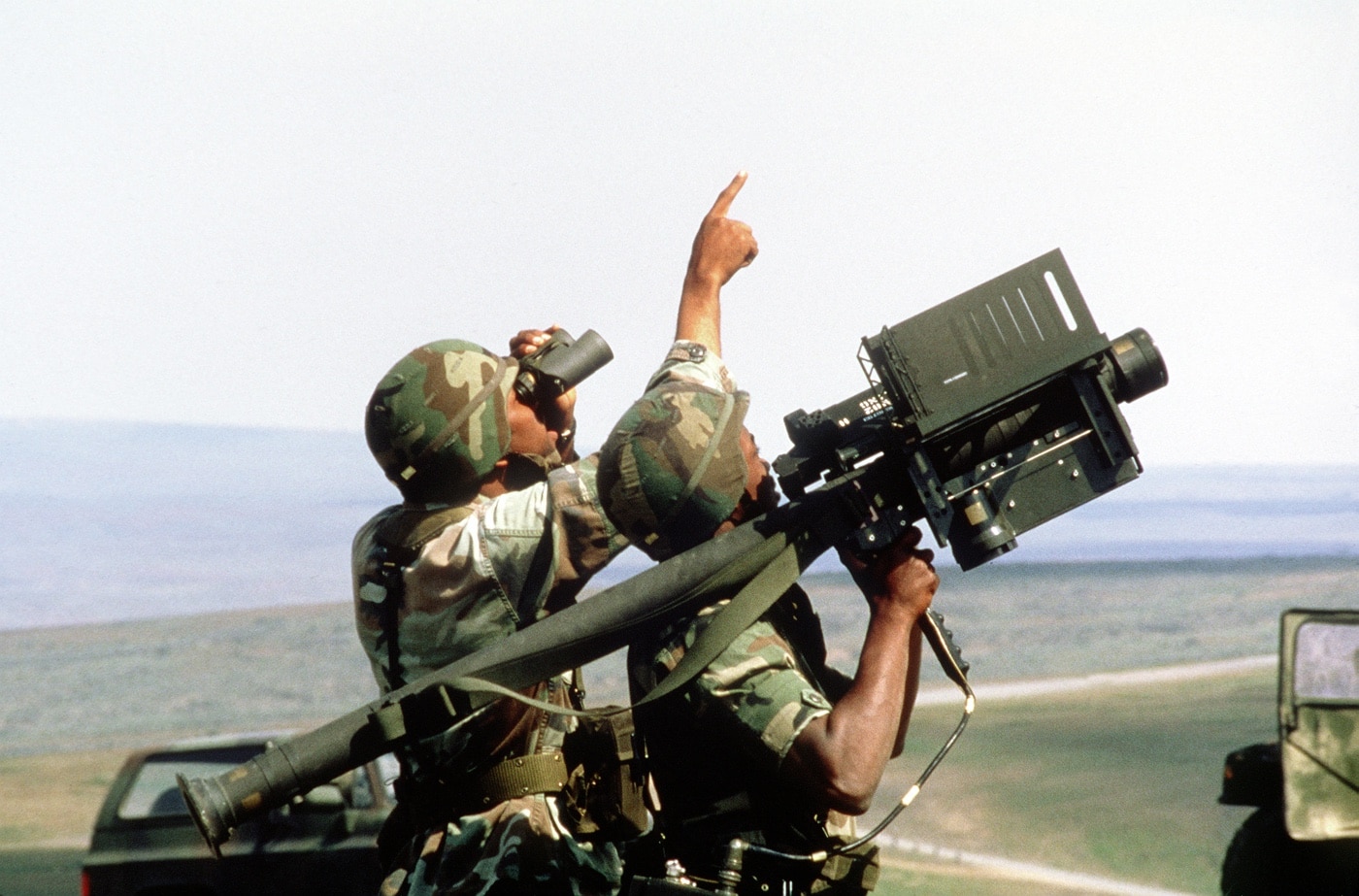
In total, seventy-four Mi-24 helicopters were lost in the conflict, including twenty-seven that were shot down by the Stinger missiles. Despite that fact, the Mi-24 Hind has seen service in dozens of conflicts around the world.
Russia has remained the largest operator of the Hind, and it was in late May of this year that the Ukrainian Army’s 24th Separate Mechanized Brigade had claimed to have shot down one of the rotary aircraft with an Igla MANPADS (man-portable air defense system). Russia has also claimed to have downed several in service with Kyiv’s forces.
Soldier of Fortune Tried to Buy One
As Western intelligence efforts to obtain a Mi-24 had failed, in the 1980s, Soldier of Fortune magazine announced it would pay a $100,000 bounty, later raised to $1 million, for a Hind that was being used in Nicaragua and reportedly later Afghanistan. However, the magazine’s publisher Robert K. Brown said the bounty only applied to a pilot, crew member, or trainer who opted to defect to the West.
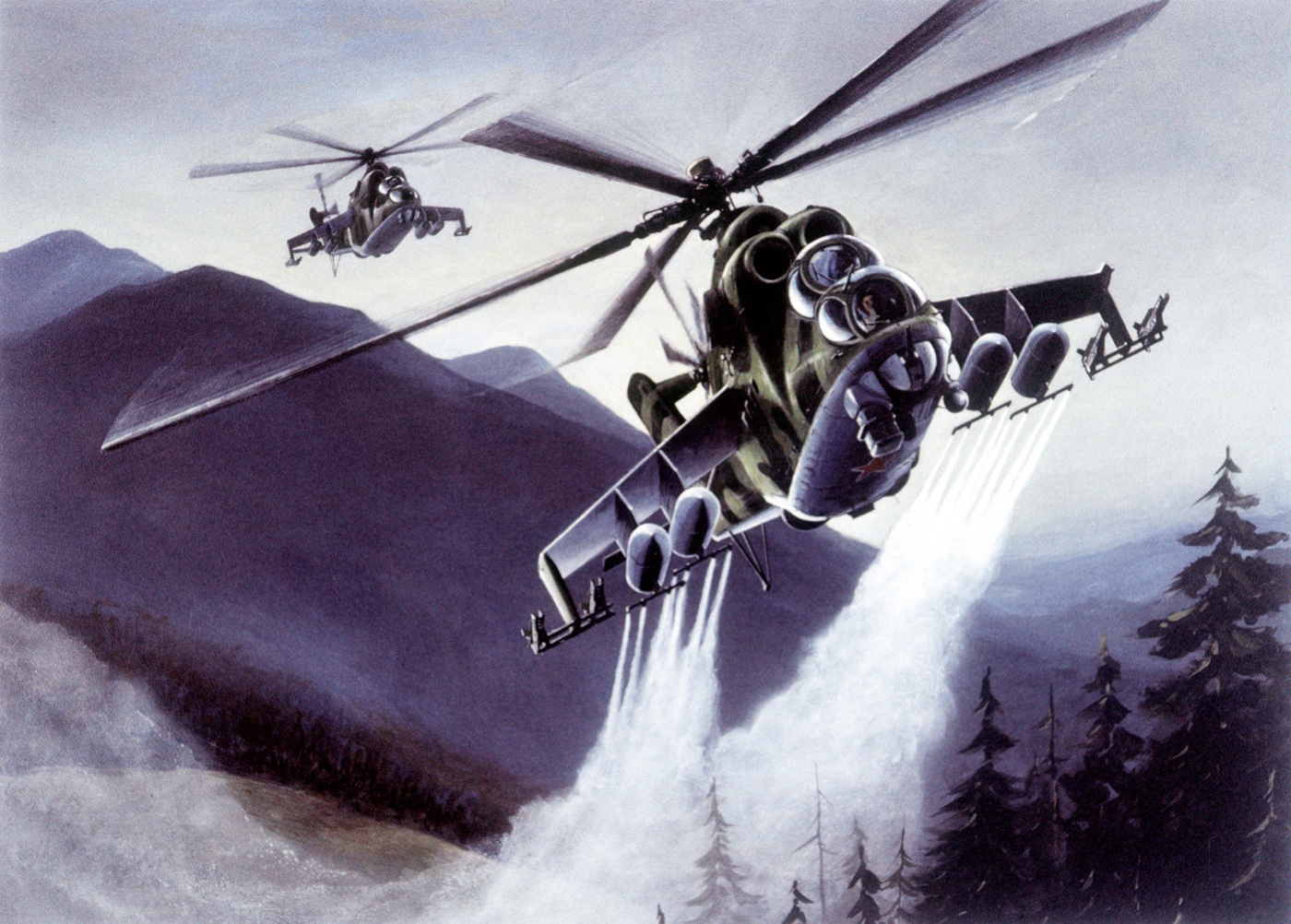
“The money’s right, $1 million will go to the first chopper jock that can get his bird out of Nicaragua,” Brown told the UPI news agency in 1985. “So let the big wheels in Managua beware — Soldier of Fortune wants a Hind.”
Jim Pate, the magazine’s associate editor at the time, further told the news agency that some individuals had asked for an advance to go steal one, but Soldier of Fortune reiterated that it had to be a Nicaraguan crew that flew the chopper to a country friendly with the United States.

The magazine had said at the time that it would “Have a team of experts in electronics, avionics, aviation and weaponry take it apart and we would publish the findings in the magazine.”
Had it been successful, Soldier of Fortune’s editors said they would have auctioned off the helicopter, but only to a U.S. ally. Brown also confirmed, “We’d probably sell it to the U.S. government.”
Of course that never happened, but nor did it actually need to!
Operation Mount Hope III
Though it is unclear why the Afghans never were able to capture one or recover a crashed Mi-24, there is speculation that even as the U.S. was supplying the means to shoot down the Hind, Washington didn’t actually want to appear to be overly engaged in the conflict.

Instead, the U.S. sought to try to obtain an Mi-24 supplied to another operator.
The chance finally presented itself in 1988, when a Soviet-made Mi-25 Hind-D, the export model of the Mi-24, was damaged and abandoned with other discarded Libyan equipment during the ensuing conflict between Libya and Chad. It was just the opportunity the U.S. had been waiting for, and it went to great lengths to ensure that the recovery would be successful.
The United States Army — after conducting a practice run in the New Mexico desert — dispatched a pair of MH-47 Chinooks from the 160th Special Operations Aviation Regiment on a recovery mission. Dubbed “Operation Mount Hope III,” the U.S. aircraft flew nearly 500 miles at night to the crash site without being detected, recovered the downed Mi-24, and then flew back at dawn to a temporary airfield in a sand storm.
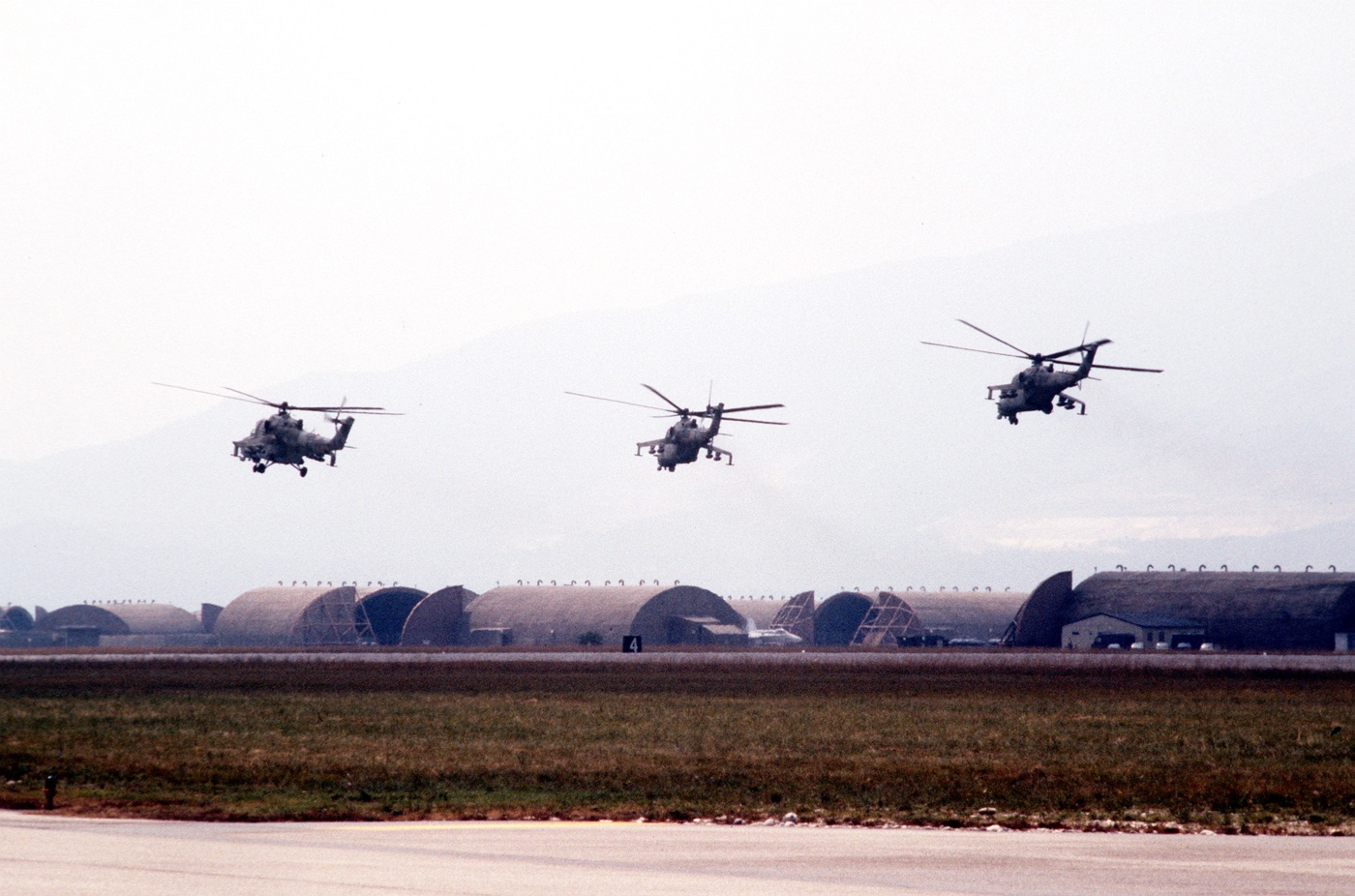
The helicopter was transported back to the United States aboard a C-6 Galaxy cargo plane. Libyan forces were believed to have been just miles from the position but were none the wiser.
The French military, which assisted with the mission, had also recovered a damaged Hind, while the British would obtain yet another one that was left behind in the war between Libya and Chad. After years of efforts by the U.S. military and intelligence community to get any details on the Soviet-designed helicopter gunship, the Libyans apparently made it all too easy for the U.S. and its allies to get more than one!
The Hind in the Movies
The Contras in Nicaragua and the Mujahedeen in Afghanistan each came to fear the Mi-24 — at least in Afghanistan until the anti-Soviet forces were armed with FIM-92 Stinger missile launchers, which shot down the helicopters at an alarming rate. The story of how the guerrillas were eventually armed with U.S.-made anti-aircraft weapons to counter the Hind was the central plot of the 2007 film Charlie Wilson’s War.

It wasn’t actually the first film to feature a real M-24, as the helicopter had its big screen debut in 1997’s Air Force One.
However, the helicopter had been presented in previous films via the magic of Hollywood. A 1/12 scale radio-controlled flying model of the Hind appeared in the 1982 film Firefox, but close-ups of the pilots were filmed in a modified cockpit that was later used in the film Blue Thunder, which was released a year later.
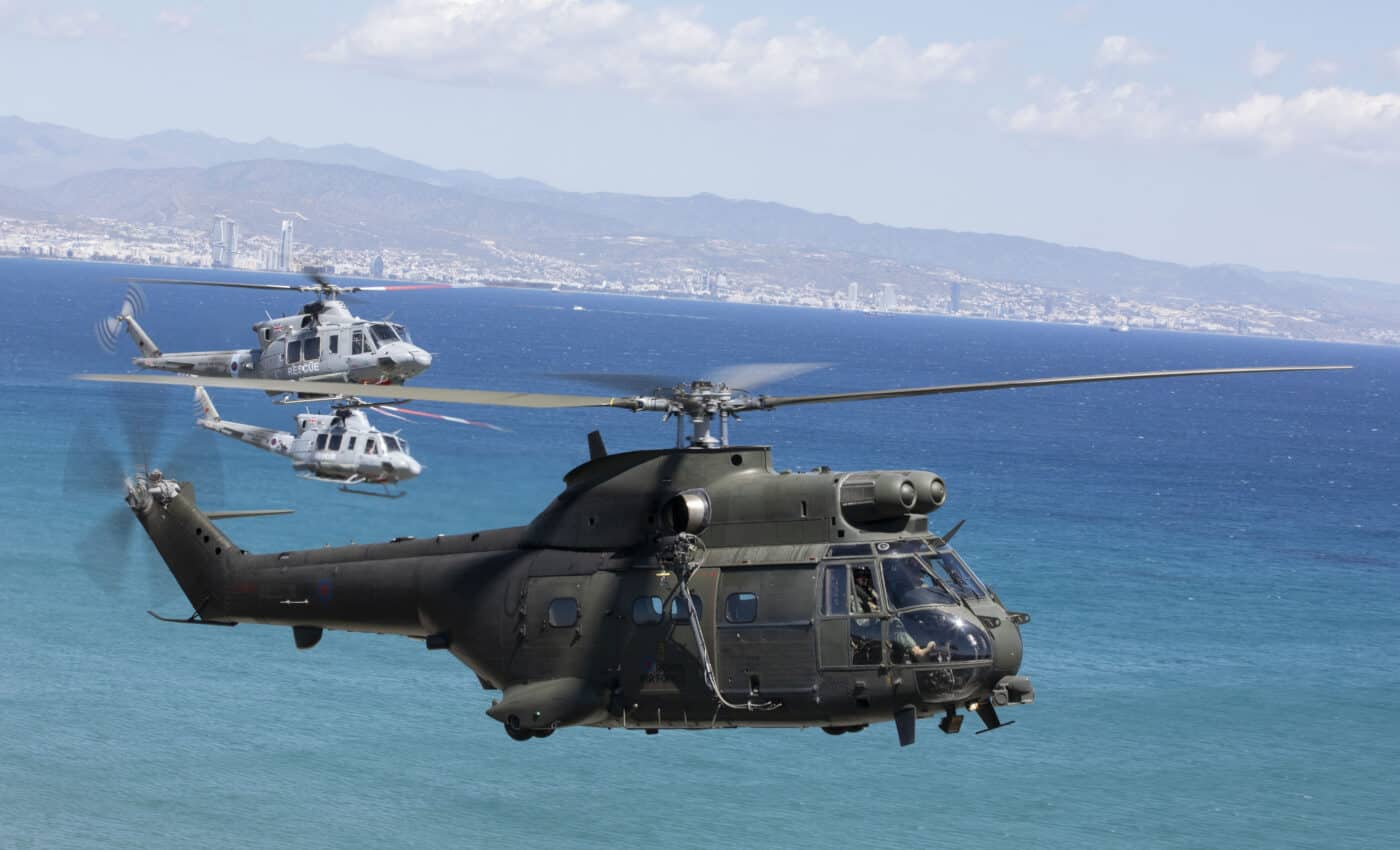
Actual full-scale mock-ups of the Hind appeared in 1984’s Red Dawn, and then in 1985’s Rambo: First Blood Part II, as well as in Rambo III three years later. For Red Dawn, the filmmakers had a pair of French Aérospatiale Pumas dressed up to replicate the Soviet military’s dedicated attack helicopter.
It is actually quite commendable that the production went to such lengths, as for years Hollywood typically employed current Western military hardware with foreign markings and called it a day. The results were impressive, and the same mocked-up helicopters produced for Red Dawn went on to see use in the subsequent Rambo films. Other films also used mocked-up versions, but none came as close to the real deal.
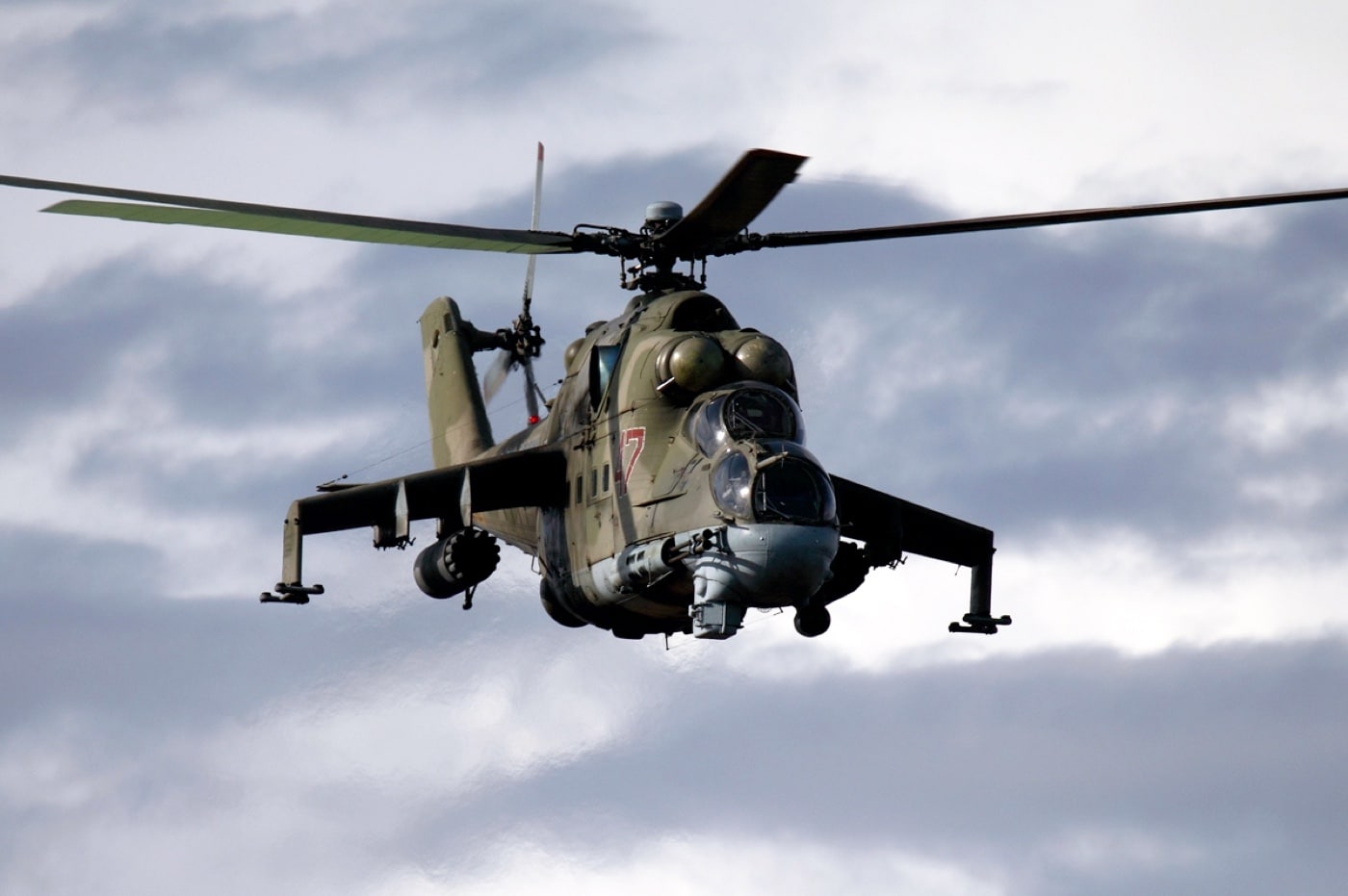
Actual Hind helicopters have since appeared in the Russian 2005 film The 9th Company, which depicted the Battle for Hill 3234 where Soviet Army paratroopers had to defend their post against Mujahideen fighters; as well as the 2006 film Blood Diamond; A Good Day to Die Hard (2013); while an Mi-24 was even seen in last year’s box office hit Top Gun: Maverick.
Perhaps it is time Hollywood finally makes a movie about Operation Mount Hope III — and we can only hope!
Aircraft on Display
Though the Central Intelligence Agency (CIA) and Soldier of Fortune magazine likely would have paid $1 million (or more) to acquire a Mil M-24 back in the 1980s for a close-up inspection, today it is far easier to see one up close — as more than three dozen are on display at museums around the world.
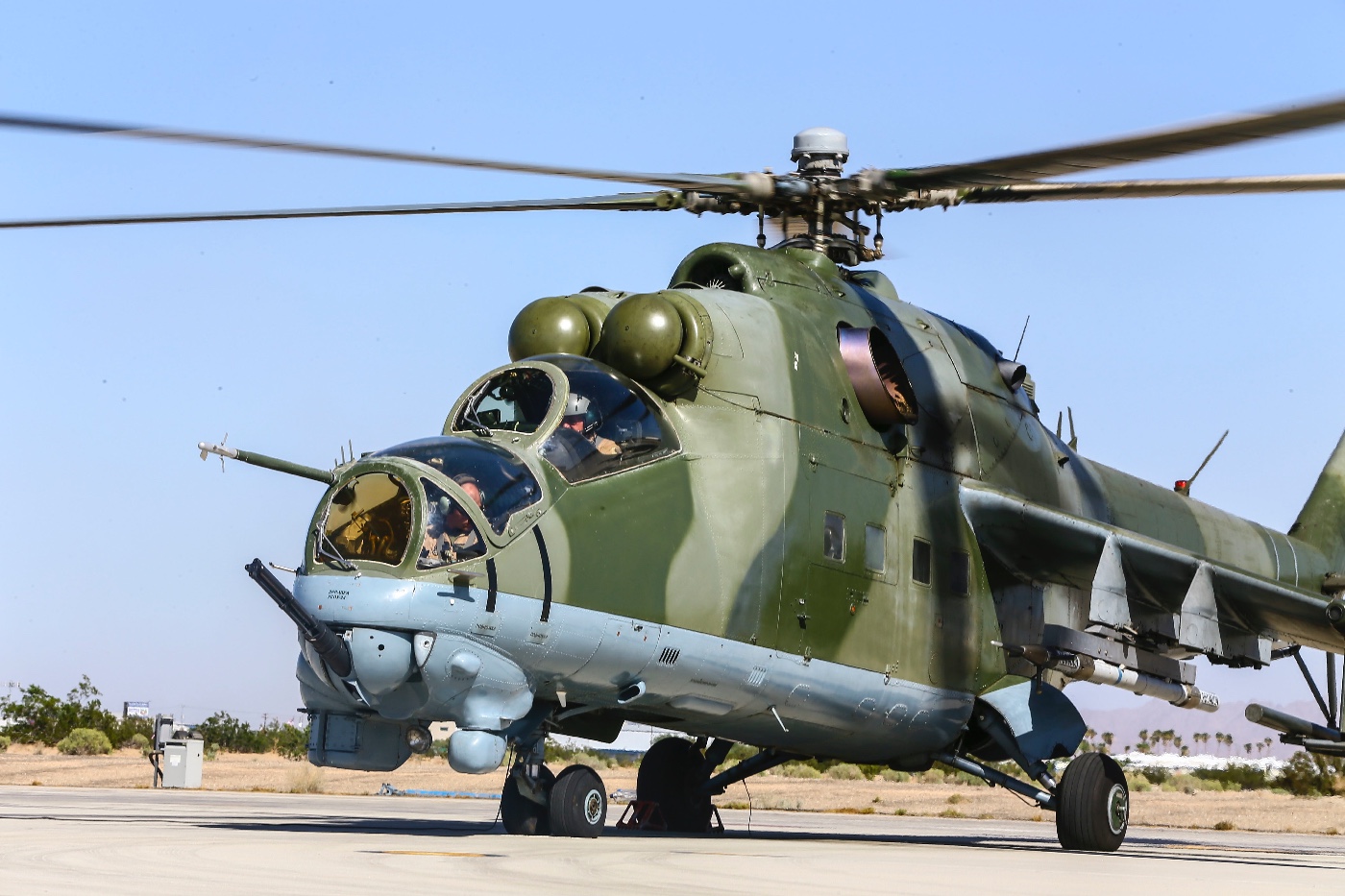
Interestingly, however, only one is currently reported to be in a Russian military museum — notably, in the Central Air Force Museum outside of Moscow. Several variants of the Mi-24 are now in the collection of the Ukraine State Aviation Museum, Kyiv, while another is in the nearby National Museum of the History of Ukraine in the Second World War (formerly the Museum of the Great Patriotic War).
Four Mi-24s are in now museums in the United States including the one recovered in Operation Mount Hope III, which is in the collection of the Southern Museum of Flight in Birmingham, Alabama; while the others are respectively in the Pima Air and Space Museum, Tucson, Arizona; the Cold War Air Museum, Lancaster, Texas; and the Russell Military Museum, Zion, Illinois.
None are reportedly in any museums in Afghanistan, but wrecks from the Soviet-Afghan War can still be found in remote parts of the country. A few more wrecks are now likely in the Libyan desert — but everyone stopped caring three decades ago!
Editor’s Note: Be sure to check out The Armory Life Forum, where you can comment about our daily articles, as well as just talk guns and gear. Click the “Go To Forum Thread” link below to jump in!
Join the Discussion
Continue Reading
Did you enjoy this article?

 489
489






